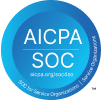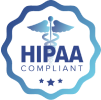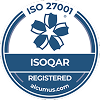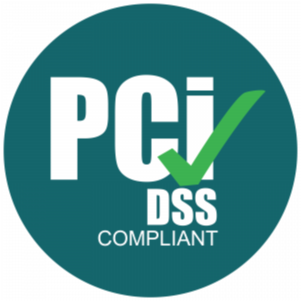Quick Summary
- Learn how HR leaders can implement an employee experience strategy or HR action plan in just 90 days.
- Follow a step-by-step plan broken into three actionable phases.
- Track impact with key EX metrics and support continuous improvement.
Why EX Needs a 90-Day Plan
Employee experience (EX) encompasses every interaction an employee has with their workplace, from onboarding to daily operations. In 2025, EX is more than a buzzword—it drives retention, engagement, and productivity. Yet, many organizations struggle to move from idea to execution.
A structured 90-day plan helps HR leaders overcome inertia and focus on what matters. By breaking the process into three clear phases—quick wins, strategic rollout, and long-term integration—leaders can deliver measurable impact without overwhelming their teams. This guide walks you through each step to make EX tangible, trackable, and sustainable.
Days 1–15: Laying the Groundwork
The first two weeks are all about setting a solid foundation for your employee experience implementation plans. Begin by conducting a thorough audit of your current employee experience landscape. What initiatives already exist? Where are the gaps? Use this opportunity to gather insights from exit interviews, engagement surveys, and informal feedback.
Next, align your EX goals with broader business objectives. Whether you’re aiming to reduce turnover or improve productivity, your EX strategy should directly support those outcomes. Once your vision is clear, secure sponsorship from senior leadership and build cross-functional support. Executive backing ensures resources and visibility, while collaboration with departments like IT and communications helps operationalize the plan.
With leadership support in place, form a dedicated EX team. Assign clear roles to drive accountability and momentum. Finally, establish baseline metrics using tools like Sogolytics to measure engagement, sentiment, and feedback responsiveness. These early steps not only lay the groundwork for success but also signal to employees that change is coming—with intention.
Checklist:
- Audit current EX efforts
- Align EX vision with goals
- Assemble implementation team
- Define baseline metrics
Days 16–30: Quick Wins & Listening Launch
With the foundation in place, the next phase focuses on visibility and momentum. Now is the time to implement a few low-effort, high-impact improvements. These can be small changes—like better break room amenities or clearer internal communication—that show employees you’re listening and willing to act.
At the same time, launch your employee feedback collection tools. Pulse surveys, digital suggestion boxes, or brief feedback polls give employees a voice and provide early data to inform deeper changes. Make sure to communicate the purpose of these tools and your broader EX initiative across multiple channels. Use team meetings, email updates, and internal platforms to explain what’s happening and why it matters.
This phase is all about building trust. By acting on feedback quickly and being transparent about your goals, you create a culture where employees feel heard and engaged—right from the start.
Checklist:
- Figure out your employee listening strategy
- Launch employee listening tools
- Communicate EX efforts org-wide
- Gather baseline engagement insights
Days 31–60: Strategic Rollout
As early momentum builds, shift toward deeper, more strategic interventions. Start with employee journey mapping to identify the most critical touchpoints—onboarding, performance reviews, internal transfers—where experience can make or break engagement. Prioritize these areas for redesign.
Training is also key in this phase. Equip managers with the skills to foster a feedback-friendly environment and model the EX mindset. Their role is central to sustaining the changes you’re introducing. Simultaneously, roll out continuous listening practices such as scheduled check-ins or recurring pulse surveys to keep a steady stream of insight coming in.
Where possible, integrate these initiatives into your existing HR systems or workflows. Embedding EX into everyday tools helps normalize the effort and ensures consistency. Around Day 60, conduct a mid-point review to assess progress, share findings, and adjust tactics as needed.
Checklist:
- Map critical employee journeys
- Train people managers
- Implement continuous feedback loops
- Adjust strategy based on results
Days 61–90: Scaling & Embedding EX
By this stage, you should have early results and proven ideas ready to scale. Expand the most effective initiatives across the organization, tailoring them where needed to fit different teams or regions. This is where consistency meets flexibility.
To sustain momentum, formalize ownership of EX efforts. Create governance structures that define who is responsible for what, and how initiatives will be tracked over time. Set up dashboards to monitor key metrics in real time, giving leadership a clear view of how EX is evolving and where to intervene.
Continue nurturing a feedback-driven culture through regular communication, recognition, and coaching. Reinforce the message that employee experience is not a one-off project, but an ongoing priority. Finally, develop a roadmap for the next phase—quarterly check-ins, new initiatives, and continuous learning—so the gains you’ve made continue to grow.
Checklist:
- Formalize EX reporting structure
- Embed EX into company culture
- Set timeline for long-term EX measurement
Measuring Success: What to Track
Tracking progress is essential to proving the value of your EX strategy. Focus on a mix of sentiment and behavioral metrics. These include employee Net Promoter Score (eNPS), engagement levels, retention rate, and feedback response rates. You can also use customer satisfaction scores as a proxy to measure downstream effects of a positive workplace culture.
To make tracking easier and more consistent, consider tools like Sogolytics, which help automate data collection and generate real-time dashboards. With the right employee experience metrics in place, you can show progress, spot red flags early, and keep EX efforts aligned with business outcomes.
FAQs
What should HR prioritize in the first 30 days of implementing EX?
Focus on assessing your current state, aligning goals, getting leadership buy-in, and setting baseline metrics.
How do you measure if employee experience initiatives are working?
Look for changes in engagement scores, eNPS, retention rates, and participation in feedback activities. Over time, consistent improvements in these areas indicate that your EX initiatives are having a positive impact.
Can a small HR team realistically implement this 90-day plan?
The answer is yes! Focus on a few high-impact actions and work cross-functionally with teams like IT, communications, and operations. Lean on automation tools where possible to reduce manual effort.
What’s the best way to collect employee feedback early on?
Start with brief, anonymous surveys and suggestion tools. Keep the process simple to encourage participation and build trust gradually.
How do you maintain momentum after the first 90 days?
Develop a clear post-implementation roadmap with quarterly goals. Reinforce accountability by assigning ownership, and keep communication flowing through regular updates and touchpoints.












